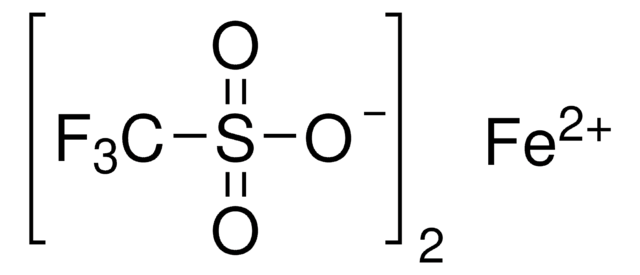434000
Iron(II) bromide
AnhydroBeads™, −10 mesh, 99.999% trace metals basis
Synonym(s):
Ferrous bromide
About This Item
Recommended Products
product line
AnhydroBeads™
Quality Level
Assay
99.999% trace metals basis
form
beads
impurities
≤15.0 ppm Trace Metal Analysis
particle size
−10 mesh
bp
934 °C (lit.)
mp
684 °C (lit.)
solubility
ethanol: very soluble(lit.)
density
4.63 g/mL at 25 °C (lit.)
application(s)
battery manufacturing
SMILES string
Br[Fe]Br
InChI
1S/2BrH.Fe/h2*1H;/q;;+2/p-2
InChI key
GYCHYNMREWYSKH-UHFFFAOYSA-L
Looking for similar products? Visit Product Comparison Guide
Related Categories
Legal Information
Not finding the right product?
Try our Product Selector Tool.
accessory
Storage Class Code
11 - Combustible Solids
WGK
WGK 3
Flash Point(F)
Not applicable
Flash Point(C)
Not applicable
Personal Protective Equipment
Choose from one of the most recent versions:
Already Own This Product?
Find documentation for the products that you have recently purchased in the Document Library.
Customers Also Viewed
Articles
Lithium-ion batteries represent a group of electrochemical devices used for electricity storage and have attracted a lot of attention in the past two decades due to their portability, rechargeability and low cost.
Our team of scientists has experience in all areas of research including Life Science, Material Science, Chemical Synthesis, Chromatography, Analytical and many others.
Contact Technical Service












